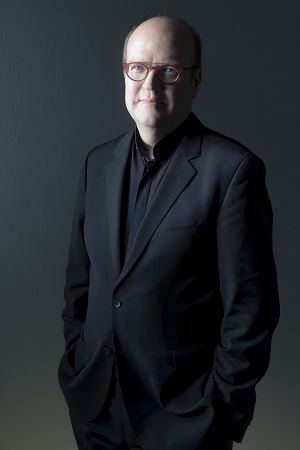 United States Mozart: Amanda Forsythe (soprano), Michèle Losier (mezzo-soprano), Jeremy Ovenden (tenor), Neal Davies (bass-baritone), Westminster Symphonic Choir (Joe Miller, director), Philadelphia Orchestra / Bernard Labadie (conductor), Verizon Hall, Kimmel Center, Philadelphia, 13.4.2019. (BJ)
United States Mozart: Amanda Forsythe (soprano), Michèle Losier (mezzo-soprano), Jeremy Ovenden (tenor), Neal Davies (bass-baritone), Westminster Symphonic Choir (Joe Miller, director), Philadelphia Orchestra / Bernard Labadie (conductor), Verizon Hall, Kimmel Center, Philadelphia, 13.4.2019. (BJ)

Mozart – Masonic Funeral Music, K.477; Symphony No.25 in G minor, K.183; Requiem, K.626 (ed. Robert Levin)
It seems to be predestined that, on the rare occasions when I encounter Mozart’s deeply expressive Masonic Funeral Music in the concert hall, it should be conducted by a seated maestro. In February 1962, the maestro in question was Otto Klemperer, who added the work as preface to a performance of Mahler’s Second Symphony, in tribute to Bruno Walter, who had just died.
By reason of his poor health, Klemperer did always conduct seated, whereas, when I last had occasion to review a concert conducted by the Canadian Bernard Labadie, I described him as a live wire on stage, generating orchestral playing of extraordinary rhythmic precision and wide dynamic range. Seeing his new stage set-up, I wondered at first whether it might diminish his physical exuberance, as I sometimes used to feel that the loss of mobility left by youthful poliomyelitis was adversely affecting that profoundly gifted conductor James DePreist’s ability to communicate with his orchestra. But Labadie’s gestures were just as vivid and forceful as they had been eight years ago, and for the most part they drew a no less committed response from the Philadelphia Orchestra and the Westminster Symphonic Choir.
Though the program was all Mozart, it featured orchestral sonorities that were not typical of what Mozart usually offers. The ‘Little G-minor’ Symphony of 1773 – so nicknamed to distinguish it from the composer’s great penultimate contribution to the genre written fifteen years later – is one of only four among his forty-plus symphonies to call for four rather than just the two horns traditional in the late 18th century. That scoring, its flexibility enhanced by the use of two pairs of different pitches to accommodate as many ‘natural’ notes as possible, plays along with the minor key and a rhythmic urgency that look all the way forward to the D-minor Piano Concerto of 1785. Lively as the performance Labadie drew from the orchestra was, however, I felt that it did not really plumb the music’s depth and richness of expression. There was more zest than heft: the piece seemed to slip rapidly past without ever quite seizing at least this listener’s full response.
The two works that flanked the symphony both offer an even more unusual and characteristic orchestral coloring. In the scores of both the Funeral Music and the Requiem that stands as Mozart’s final and uncompleted masterpiece, the woodwind section is fleshed out and enhanced with the inclusion of basset horns (three in the earlier work, two in the Requiem), relatively unusual instruments that he grew increasingly drawn to under the Masonic influence that enriched his spiritual and social life in his last years. Their somewhat veiled tone lends the Requiem in particular its pervasive air of emotional ambivalence, and expertly played at this concert by Paul Demers, Socrates Villegas, and Lino Gomez they dominated the sonority in an irresistibly eloquent way, though there was also nothing to be sneezed at in the strong and unfailingly graceful contributions of the orchestra’s more familiar instruments.
The choral singing was often superb, though some of the words came across less clearly than we have come to expect from Joe Miller’s choir: contrapuntal sections were slightly muddy in this regard, and it was only with the onset of more powerfully monophonic passages like the Dies irae that the text began to make its full effect. Of the vocal soloists, meanwhile, notwithstanding skillful singing from the two men, it was Amanda Forsythe’s ability to float a ravishingly lucid and resonant line (reminiscent of the kind of sound, at once soft and voluminous, that retired principal oboist Richard Woodhams used to fill the hall with) and Michèle Losier’s sumptuous and finely focused mezzo-soprano tone that gave the most pleasure.
We hear the Requiem most often in the less than entirely convincing version completed by Mozart’s pupil Franz Xaver Süssmayr. Several composers have since offered a variety of completions, but none have been as successful as the version by the musicologist and pianist Robert Levin that was presented on this occasion. Without changing things just for the sake of change, Levin has cleverly corrected Süssmayr’s more egregious infelicities, and the Levin version really ought now to be regarded as the Requiem edition of choice.
(Klemperer was by no means always respectful to Bruno Walter. He is said to have told friends after a Walter concert, ‘I went to this concert that Schlesinger [Walter’s birth name] conducted. I went to see him afterwards, and I told him, “Schlesinger, I heard you conduct Mozart’s 40th Symphony twenty years ago, and you conducted it again tonight, and the two performances were identical. [Dramatic pause] And you know, he took it as a compliment?!“‘ Forgive me – that has little to do with the concert now under review, but I can’t resist re-telling the story.)
Bernard Jacobson